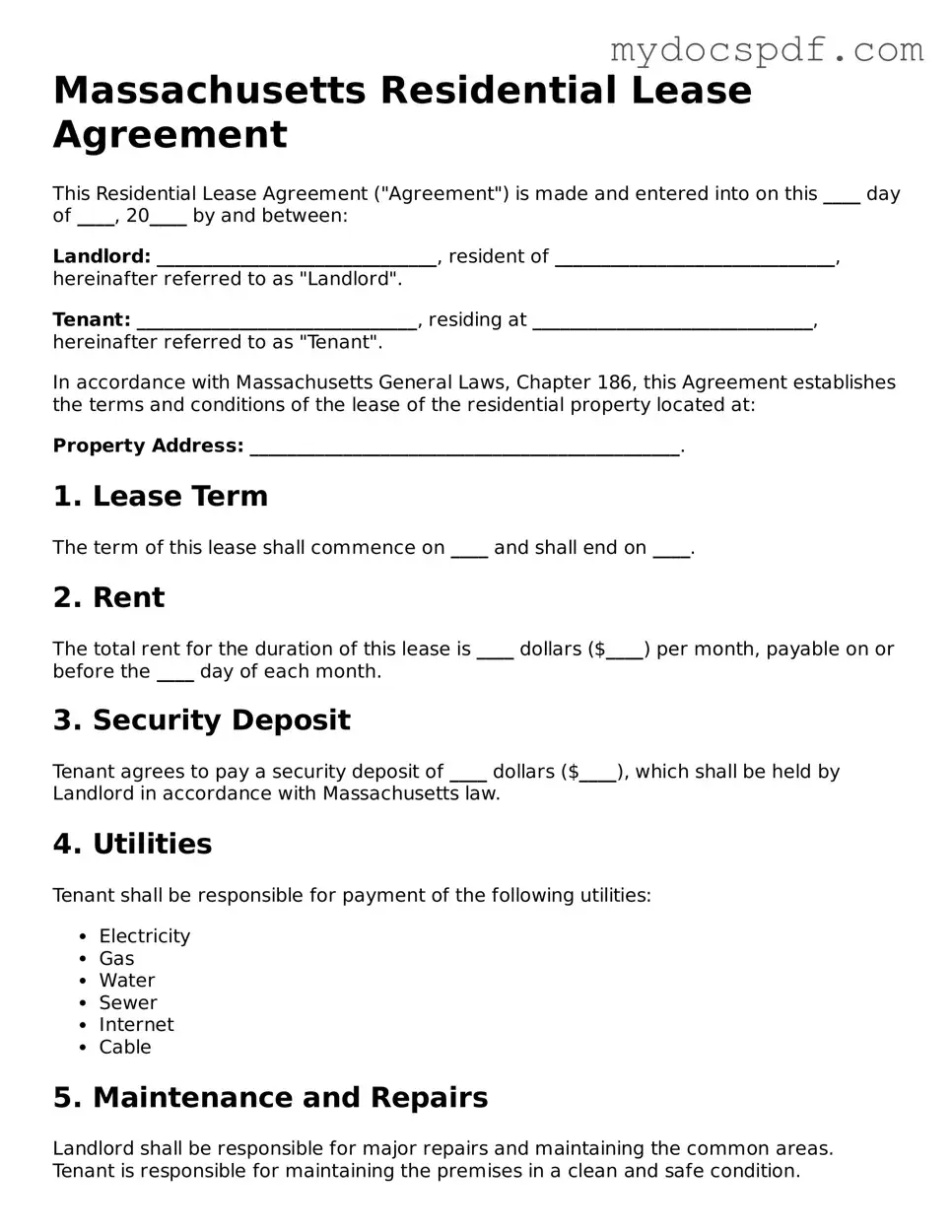Massachusetts Residential Lease Agreement
This Residential Lease Agreement ("Agreement") is made and entered into on this ____ day of ____, 20____ by and between:
Landlord: ______________________________, resident of ______________________________, hereinafter referred to as "Landlord".
Tenant: ______________________________, residing at ______________________________, hereinafter referred to as "Tenant".
In accordance with Massachusetts General Laws, Chapter 186, this Agreement establishes the terms and conditions of the lease of the residential property located at:
Property Address: ______________________________________________.
1. Lease Term
The term of this lease shall commence on ____ and shall end on ____.
2. Rent
The total rent for the duration of this lease is ____ dollars ($____) per month, payable on or before the ____ day of each month.
3. Security Deposit
Tenant agrees to pay a security deposit of ____ dollars ($____), which shall be held by Landlord in accordance with Massachusetts law.
4. Utilities
Tenant shall be responsible for payment of the following utilities:
- Electricity
- Gas
- Water
- Sewer
- Internet
- Cable
5. Maintenance and Repairs
Landlord shall be responsible for major repairs and maintaining the common areas. Tenant is responsible for maintaining the premises in a clean and safe condition.
6. Use of Premises
The premises shall be used only as a private residence. Tenant shall not engage in any illegal activities on the property.
7. Termination
Either party may terminate this lease by providing written notice at least thirty (30) days prior to the end of the lease term.
8. Governing Law
This agreement shall be governed by and construed in accordance with the laws of the Commonwealth of Massachusetts.
9. Signatures
By signing below, both parties agree to the terms of this Residential Lease Agreement.
Landlord Signature: ____________________________ Date: ________________
Tenant Signature: ____________________________ Date: ________________
